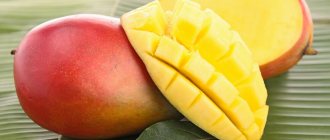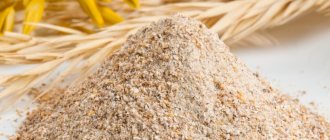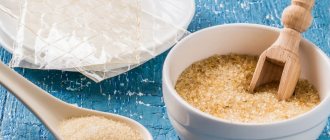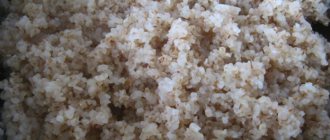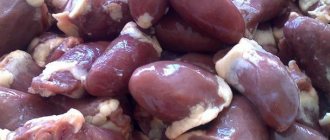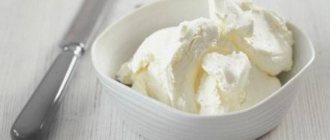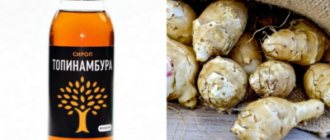Dietary properties:
How many calories are in halva, what dietary properties it has, all this is of interest to those who lead a healthy lifestyle and monitor their health and figure. So we will try to answer these questions in the next article.
So here it is:
Halva, as it turns out, is a very complicated product. In addition to some negative qualities inherent in sweets, it also has a lot of useful properties. For example, one cannot deny the benefits of halva as a source of energy for the body. This feature of this oriental delicacy was known to people in ancient times. When going on a long trip, travelers always stocked up on it, since it does not require any special conditions to be stored.
In Russia and Eastern European countries, the most common type of halva is sunflower.
It is a rich source of vitamins B1, B4, and E. These vitamins have a positive effect on the condition of hair, help restore it, and protect it from stress-induced hair loss. In addition, these vitamins are good for the skin, protect us from free radicals, and slow down the aging process.
Halva recipe
The recipe for this oriental sweet is no longer a secret to anyone, so only the lazy don’t know it. Meanwhile, it is very simple: first, the main ingredient is crushed (seeds or nuts), then caramel is added and beaten until a fluffy, homogeneous mass is obtained. In order for the halva to melt in the mouth and have an ideal fibrous-layered structure, a foaming agent (licorice root) is added to the syrup. All components of the treat are natural, so it is not on the list of unauthorized products for children.
Composition of sunflower halva:
Vitamins:
| Vitamin: | IN 1 | AT 2 | AT 4 | AT 5 | AT 6 | AT 9 | E | WITH |
| in mg. per 100 grams | 0.22 | 0.11 | 37.8 | 0.77 | 0.55 | 0.155 | 21.2 | 0.95 |
Minerals:
| Mineral: | Calcium | Phosphorus | Magnesium | Potassium |
| in mg. per 100 grams | 39 | 290 | 88 | 336 |
In Middle Eastern countries, spicy sesame is traditionally used to prepare halva. Sesame halva contains a lot of zinc, calcium, phosphorus, manganese, B vitamins, and antioxidants. Residents of the East consider it a tasty cure for migraines, colds, and a means to restore strength.
Peanut halva contains linoleic acid, vitamins PP and B2. It helps strengthen memory, relieve nervous tension, and affects the neural connections of the brain.
Useful properties of halva
Classic halva is rich in B vitamins (especially vitamin B2), E, PP. There are not many minerals here, but those contained in halva are also needed for health: iron, copper, potassium, sodium, magnesium, calcium, phosphorus.
Halva contains maltose as well as dietary fiber. There are many types of halva: these include sunflower, sesame, and nut sweets. To improve its taste, candied fruits, chocolate, honey, raisins, coconut, and nuts are added to halva. However, the healthiest thing is classic halva without additives.
The beneficial properties of halva have long been studied in the east: it is used for reduced immunity, during colds, and for prolonged migraines. Eastern doctors are confident that regular consumption of halva has a positive effect on health, strengthens the immune system and increases the body's resistance to infections.
They love to recommend halva to pregnant women: it contains a lot of folic acid, which contributes to a favorable pregnancy. Walnut halva is recommended for older people: it helps fight heart disease, changes in the brain, and aging of all systems.
Halva has a calming effect: it treats insomnia, stress, and depression. Sweetness allows the body to absorb calcium and strengthen bones. It maintains normal blood pressure and acid-base balance.
How many calories are in halva?
Here's how much:
The calorie content of sunflower halva, per 100 grams, is:
Proteins, fats and carbohydrates (BJU) of halva in gr. per 100 grams:
Proteins - 11.6
Fats – 29.7
Carbohydrates – 54.0
A:
The calorie content of Samarkand halva, per 100 grams, is:
Proteins, fats and carbohydrates (BJU) in gr. per 100 grams:
Proteins - 10.0
Fats – 22.0
Carbohydrates – 56.0
And here:
The calorie content of peanut halva, per 100 grams, is:
Proteins, fats and carbohydrates (BJU) in gr. per 100 grams:
Proteins - 12.7
Fats – 29.0
Carbohydrates – 47.0
A:
The calorie content of sesame halva, per 100 grams, is:
Proteins, fats and carbohydrates (BJU) in gr. per 100 grams:
Proteins - 12.7
Fats – 29.9
Carbohydrates – 50.6
Halva for weight loss:
And further:
You should avoid this sweetness if you have an individual intolerance to it or diabetes. You should also not eat halva if you have:
- Obesity
- Acute pancreatitis
- Caries
- Diathesis
- Urolithiasis disease
- Liver diseases
And a healthy person needs to know when to stop.
Calorie content of halva in chocolate
In our country, halva is wildly popular, almost as popular as in Arab countries. A particularly favorite treat since childhood and a symbol of the holiday is Rot Front halva, the calorie content of which seems prohibitive to many.
The bright red and yellow foil wrapper of this delicacy is probably recognized from thousands of others by all children of the USSR and the post-Soviet space. Candies are traditionally placed in New Year's sweet gifts or hung on a decorated Christmas tree. But only in childhood can you carefree carry hidden sweets, keeping count only of the shiny empty candy wrappers. Adults, seeing their favorite delicacy, begin to frantically think about how many calories and sugar it contains.
The calorie content of halva in Rot Front chocolate is 534 kcal per 100 grams. This is one of the most high-calorie types of halva, for obvious reasons. It is made from grated peanuts, and cocoa butter substitutes and cocoa powder are added to prepare the glaze.
Even children won’t eat packs of this sweetness; most often we are content with one or two pieces. One candy weighs a lot - 27 grams. Thus, halva in chocolate has a calorie content of 1 piece of approximately 144 units. It’s not at all an “easy” pleasure, but sometimes you can afford it even for those who closely monitor their diet. The product, as we said, contains many useful substances.
Harm from halva
Sunflower halva - benefit or harm to the body? Like any sweet, halva is useful only in small quantities. Its caloric content, as well as the caloric content of the nuts or seeds included in its composition, fluctuates around 500 units per 100 grams. From which it follows that abuse of this delicacy will lead to excess weight. It contains molasses, which may adversely affect the health of people with diabetes. In addition, halva is an allergen. Therefore, it should be used with caution by sensitive people.
What products are combined with sunflower halva? The benefits and harms of this delicacy have already been discussed above. In general, halva is a heavy product, which is why it is not recommended for those who have any problems with the digestive system. It is not combined with chocolate, cheese, meat and dairy products. It is better to eat it separately from everything else, for example, like a melon. We found that the benefits and harms of sunflower halva are determined by the state of health and moderation in consumption.
The benefits of sunflower halva
Despite the relatively high calorie content of sunflower halva, the product is considered very healthy. The sweet contains vitamin B1, which is useful for people suffering from depression, nervous system disorders, heart and vascular diseases.
Interesting: Calorie content of honey per teaspoon
Thanks to vitamin B1, the process of carbohydrate absorption is activated, the production of gastric juice is normalized, and the body's immune reactions are improved. This vitamin improves the condition of skin and hair, and helps eliminate the effects of severe stress.
The advantage of sunflower halva is its enrichment with vitamin F, which helps normalize cholesterol balance in the body and improves the condition of blood vessels. Quite often, increased intake of vitamin F is recommended for people with impaired stomach acidity.
Vitamin D in sunflower halva is extremely useful for strengthening bones and better absorption of calcium. The magnesium contained in the product has a beneficial effect on the nervous system, the heart, normalizes blood pressure, and promotes accelerated muscle growth.
Halva as a remedy for diseases
The seeds are considered an excellent remedy for the prevention of various heart diseases, in particular myocardial infarction, and have a healing effect in liver diseases. In addition, some scientists believe that the seeds help reduce the risk of malignant diseases. Experts conducting research in this area have found that sunflower seeds can inhibit the development of tumors in organs such as the mammary glands, ovaries, intestines, skin, and lungs. The test subjects were chickens who were subjected to the experiment for a year. Sunflower seeds were added to their diet daily, as a result the number of tumors in the experimental subjects decreased. Now doctors are faced with the task of identifying a similar effect of seeds on the human body.
Recipe for sesame halva with cocoa
You already know about the benefits of sesame and its calorie content. Therefore, here will be just another recipe for sesame halva with the addition of cocoa and milk powder.
Cocoa helps the body produce the hormone of happiness – endorphin! Increases performance and improves mood.
For 100 g – 374 kcal. Proteins – 24.20 g, fats – 17.50 g, carbohydrates – 31.90 g.
Total cooking time is 3 hours. Without cooling – 1 hour.
There will be a total of 6 servings.
Ingredients:
- sesame seeds – 300 g;
- powdered milk – 200 g;
- granulated sugar – 100 g;
- butter – 150 g;
- cocoa powder – 2 tbsp. spoons.
Cooking method:
- Lightly fry the sesame seeds until golden brown in a frying pan, and then chop them. We do not add oil.
- Melt the butter and add ground sesame seeds to it. Heat the mixture over low heat for about 15 – 20 minutes, remembering to stir.
- In a separate bowl, combine milk powder, sugar and cocoa, add hot sesame seeds and butter and mix thoroughly. We spread the resulting mass into molds and compact it (or compact it, roll it into a roll and wrap it in thick film).
- After 2 hours in the refrigerator, sesame halva can be eaten.
The right choice when purchasing
You can buy truly tasty and healthy halva by studying a number of subtleties. A quality product is light in color and crumbles a little. It should not “cry” and be covered with a dark coating. Moisture appearing on the surface indicates a violation of the rules of cooking technology, that is, they either added excess sugar or went too far with seeds. If the product is in a puddle of oil, then the storage conditions have been violated. Halva does not tolerate temperatures above 18 degrees. Carefully inspect the product; it should not contain husks from nuts or seeds. This is exactly what high-quality sunflower halva should look like.
The benefits and harms also depend on the packaging. When choosing halva, pay attention to the packaging. Long-term storage halva is “hidden” in a vacuum. Sealed in this way, it can stay on a store shelf for six months. The weighted analogue has the shortest shelf life; its peculiarity is that it dries quickly and acquires a bitter aftertaste. In a cardboard package, halva can last for about 60 days. Remember, this oriental sweet easily absorbs foreign odors, so it is recommended to store it in foil.
This is such an amazing sweetness - sunflower halva! The benefits and harms, calorie content of this delicacy were discussed in this article. We can talk about this product endlessly. But how can you refuse it? If there is a mistrust of halva from the store, then everyone can prepare it at home. Although it will taste slightly different, it will be completely natural.
Homemade halva
This delicacy can be prepared at home. Here is the prescription. You will need three glasses of sunflower seeds, two glasses of flour, 200 ml of water, 100 grams of sugar, 100 ml of vegetable oil and vanillin.
Fry the seeds in a frying pan without adding sunflower oil. After this, pass them through a meat grinder several times. Fry the flour, also without adding oil, in a frying pan until golden brown, stirring constantly. Pour sugar into the prepared pan, add vegetable oil and vanillin, and bring to a boil. Pour the seeds and flour into a saucepan. Take a mold, cover it with oilcloth or oiled paper, put the resulting mass on it and put it in the refrigerator to harden for a couple of hours.
